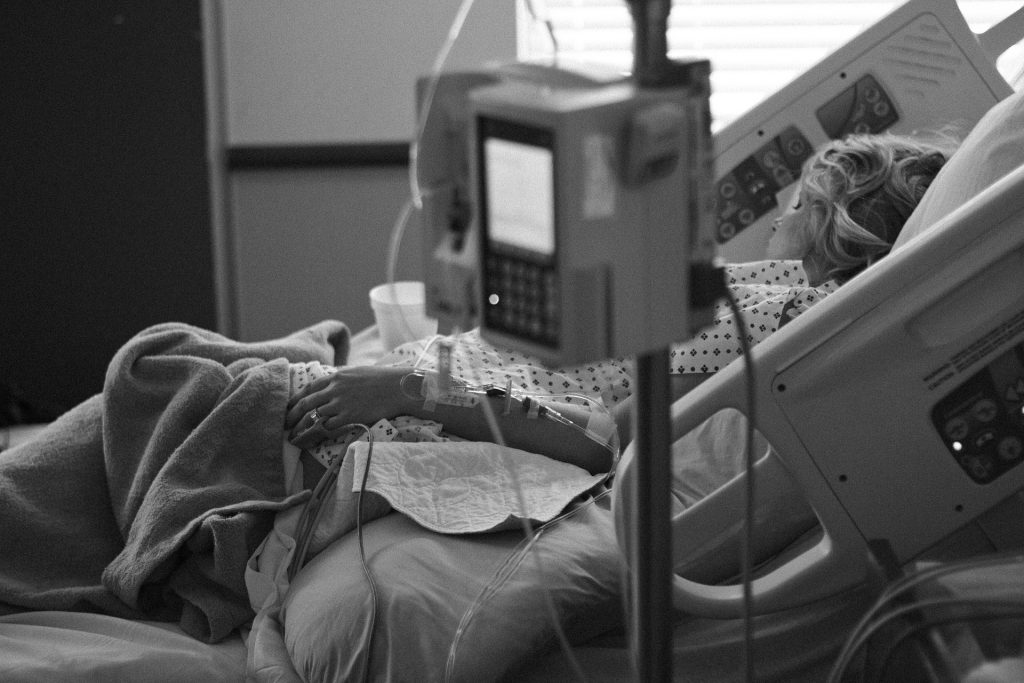




Nosocomial infections known also as hospital-acquired infections, hospital-associated infections, and hospital infections are infections that are not present in the patient at the time of admission to hospital but develop during the stay in hospital. The term “health care-associated infection” or “HAI” is now used in place of the older term “hospital infection”, because such infections do not develop solely in hospitals, but can also arise in a long-term care facility or in a doctor’s surgery.
Good hospital hygiene is vital to any strategy for preventing HAIs (healthcare associated infection) in hospitals. There is evidence upon which recommendations for hospital environmental hygiene are based, with the relevant standards. Guidelines are provided e.g. for cleaning the general hospital environment, cleaning items of shared equipment and education and training of staff. There exists clinical evidence obtained from case reports and outbreak investigations suggesting dependence between poor environmental hygiene and the transmission of microorganisms causing HAIs in hospital.
Transmission of microorganisms from the environment to patients may occur through direct contact with contaminated equipment, or indirectly as a result of touching by hands. Methicillin-resistant Staphylococcus aureus (MRSA) and other pathogens have been recovered from a range of surfaces commonly touched, such as door handles, computer keyboards, soap dispensers, and sink taps, and sites where dust is allowed to accumulate.

Two different forms of infections can be distinguished. Endogenous infection, self-infection, or auto-infection. The causative agent of the infection is present in the patient at the time of admission to hospital but there are no signs of infection. The infection develops during the stay in hospital as a result of the patient’s altered resistance. The second form is cross-contamination followed by cross-infection. During the stay in hospital the patient comes into contact with new infective agents, becomes contaminated, and subsequently develops an infection. While there is no clinically significant difference between the endogenous self-infection and the exogenous cross-infection, the distinction is important from the standpoint of epidemiology and prevention.
For example in U.S., there are quality standards for hospital cleanliness developed by the Infection Control Nurses Association and the Association of Domestic Managers (NHS Estates, 2000), NHS Healthcare Cleaning Manual (NHS Estates, 2004), and regulations (NHSE, 1995; 1989), and clinical governance guidance (NHSE, 1998), all providing a framework within which hospital environmental hygiene can be improved and monitored. The NHS Code of Practice on the Prevention and Control of Healthcare Associated infection, which came into effect in October 2006, was developed to help organizations to plan and implement strategies for the prevention and control of HAIs.
Many microorganisms recovered from the hospital environment do not cause HAI. Cleaning will not completely eliminate microorganisms from environmental surfaces and reductions in their numbers will be transient. There is evidence that improved cleaning regimens are associated with the control of outbreaks of HAIs. In one study (Rampling 2001), the control of an outbreak of an epidemic strain of MRSA was linked with increased cleaning hours and an emphasis on the removal of dust.
Indicators of cleanliness based on levels of microbial or adenosine triphosphate (ATP) contamination have been proposed but are based on arbitrary standards of acceptable contamination and do not distinguish between normal environmental flora and pathogens responsible for HAI.
Barker, J. et al. Effects of cleaning and disinfection in reducing the spread of Norovirus contamination via environmental surfaces. Journal of Hospital Infection 2004: 58: 42-49. https://doi.org/10.1016/j.jhin.2004.04.021
Brooks, S.E. et al. Chlorhexidine resistance in antibiotic resistant bacteria isolated from the surfaces of dispensers of soap containing chlorhexidine. Infection Control and Hospital Epidemiology 2002; 23: 11, 692-695. https://doi.org/10.1086/501996
Dancer, S.J. Mopping up hospital infection. Journal of Hospital Infection 1999, 43: 85-100. https://doi.org/10.1053/jhin.1999.0616
Denton, M. et al. Role of environmental cleaning in controlling an outbreak of Acinetobacter baumannii on a neurosurgical unit. Journal of Hospital Infection 2004; 56: 106-110. https://doi.org/10.1016/j.jhin.2003.10.017
French, G.L. et al. Tackling contamination of the hospital environment by methicillin-resistant Staphylococcus aureus (MRSA): a comparison between conventional terminal cleaning and hydrogen peroxide vapour decontamination. Journal of Hospital Infection 2004; 57: 31-37. https://doi.org/10.1016/j.jhin.2004.03.006
Garner, J.S., Favero, M.S. CDC guideline for handwashing and hospital environmental control, 1985. Infection Control 1986; 7: 231-235. https://wonder.cdc.gov/wonder/prevguid/p0000412/p0000412.asp
Griffiths, R. et al. Reservoirs of MRSA in the acute hospital setting: A systematic review. Contemporary Nurse 2002; 13: 38-49. https://doi.org/10.5172/conu.13.1.38
Malik, R.E. et al (2003) Use of audit tools to evaluate the efficacy of cleaning systems in hospitals. American Journal of Infection Control; 31: 3, 181-187. https://doi.org/10.1067/mic.2003.34
Oie, S. et al. Contamination of room door handles by methicillin – sensitive/methicillin-resistant Staphylococcus aureus. Journal of Hospital Infection 2002; 51: 140-143. https://doi.org/10.1053/jhin.2002.1221
Rampling, A. et al. Evidence that hospital hygiene is important in the control of methicillin-resistant Staphylococcus aureus. Journal of Hospital Infection 2001; 49: 109-116. DOI: 10.1053/jhin.2001.1013
Schultz, M. et al. Bacterial contamination of computer keyboards in a teaching hospital. Infection Control and Hospital Epidemiology 2003; 24: 4, 302-303. https://doi.org/10.1086/502200
USA Department of Health (2006) The Health Act 2006: The NHS Code of Practice on the Prevention and Control of Healthcare Associated infection. London: DH.
USA NHS Estates (2004) The NHS Healthcare Cleaning Manual. London: DH.
USA NHS Estates (2000) Standards for Environmental Cleanliness in Hospitals. London: The Stationery Office.
USA NHS Executive (1998) A First Class Service: Quality in the New NHS. Leeds: DH.
USA NHS Executive (1995) Hospital Laundry Arrangements for Used and Infected Linen. Leeds: NHSE.
USA NHS Executive (1989) Hospital Catering, Delivering a Quality Service. London: HMSO.
WHO. Hospital hygiene and infection control. https://www.who.int/water_sanitation_health/medicalwaste/148to158.pdf